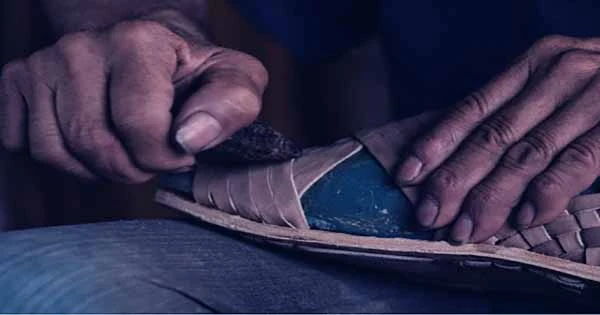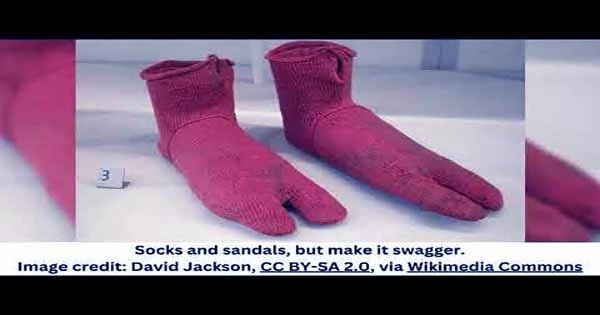Socks and sandals are as polarizing in the present period as pineapple on pizza, but we’ve been wearing the style for millennia, according to a handmade pair made 1,600 years ago. They are now on display in London’s Victoria & Albert Museum as Coptic socks and are thought to date from the fourth to fifth centuries.
The fashionable socks were discovered at the end of the nineteenth century, and if you believe people back then had oddly shaped feet, there’s a reason for their lobster-like pattern. They have a bifurcated toe because they were designed expressly for sandal wear, displaying a level of swagger that is rarely seen these days. Due to the temperature, the daytime would be more sandal-only, but at certain periods of the year, the nights would be cooler, making sandal socks a desirable addition.
In addition to their distinct appearance, the Coptic socks are famous for the method by which they were created. Nlebinding is a textile technique that predates knitting and crochet. It included looping thread with a one-eyed needle to create flexible fabric, making it a popular choice for mittens, stockings, and caps.

It may sound and even seem like knitting, but seasoned knitters will understand that the method is quite different.
“While knitting and crochet use continuous threads, the thread length in [Nlebinding] is limited because the needle carrying the working end must pass through previously-made loops in the fabric structure,” according to a 2017 paper on Nlebinding socks. “As a result, [Nlebinding] designs items that can withstand heavy use and do not run in the event of thread breakage.”
In fact, it resembles sewing more than knitting since each stitch is formed by pulling the entire length of thread through before tightening the loop to make the next stitch. As a result, it’s slow and has the limitation of only being able to be made from a small stretch of thread. A time-consuming technique, but one with astonishing longevity, since these 1,600-year-old Coptic socks appear to be in better condition than half of the socks in our sock collection.
So, the next time you look down on socks and sandals, remember that there was a time when individuals went to tremendous efforts to acquire that level of high fashion.
















